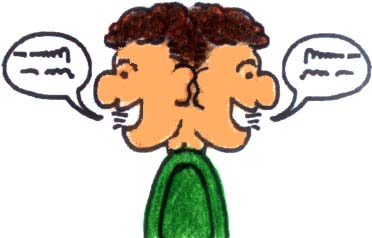
So after re-reading Nestor Capoeira’s Roots of the Dance-Fight-Game, Mestre Decânio’s A Herança de Mestre Bimba (The Heritage of Mestre Bimba) and Falando em Capoeira (Talking about Capoeira), one thing that struck me was the specificity of the context under which Mestre Bimba created capoeira regional, and what exactly the original capoeira regional entailed.
Bimba started capoeira in 1912 (at 12 years old) and began teaching in 1918. In those days, capoeira was learned “de oitava” (by ear) by watching and playing – underground, of course. Those known as masters would organize the rodas in order to provide opportunities to play, observe their students (more like apprentices) and give them advice or insight to help their games.
Bimba was smart enough to insert capoeira into this context by giving it a different name – the “Luta Regional Baiana” (Bahian Regional Martial Art). On July 9, 1937, he received official permission to teach capoeira as a physical education course. It was a six-month, three-one-hour-classes-a-week course, in which (according to Mestre Itapoan and Mestre Decânio, both students of Bimba) the students practiced the eight basic sequences, the sequence of throws, and then played in the roda. Afterwards was the esquenta-banho.
Bimba’s main innovation was to place capoeira in the academy context in order to give it ‘legitimacy’ as a form of physical fitness and thus win its legalization and the beginning of its acceptance in society. He added elements from jiu-jitsu and boxing, which he would have learned from Cisnando Lima, a medical student from Ceará (and the one who organized the demonstrations for President Getúlio Vargas) who was well-versed in these martial arts; Bimba also stated, in a newspaper article, that he added various bandas (likely from batuque, in which his parents were both skilled). In that era, adding these foreign elements tended to give ‘status’ to things, although today it’s not ‘politically correct’ to admit that Bimba was influenced by non-Afro-Brazilian styles.
In one sense, the placing of capoeira in an academy and the training by the repetition of sequences instead of just watching and imitating (a trend also followed by the angoleiros, so although they may have a more traditional style, they still followed Bimba’s lead when it came to teaching methodology…) was a good thing: it took capoeira off the streets, helped capoeira win legalization and acceptance, and as a result the art spread throughout Brazil and the world. The students learn faster, and it’s safer.
On the other hand, as Nestor Capoeira points out, the students don’t develop as much malícia, and some of the creativity and individuality of the players tends to get lost by training in an academy setting.
So, my opinion about all this: first off I’m glad Mestre Bimba did what he did; if he hadn’t, who knows whether I’d be playing capoeira today. Second, there are extremely few groups that practice ‘traditional capoeira regional’ the way Bimba taught it – the eight sequences, the throws, and the roda. All the groups in the U.S. and most in Brazil are ‘contemporary’ capoeira groups (the ones who stay closest to Bimba’s model are Mestre Nenel, Mestre Deputado, and Mestre Izael).
HOWEVER – I don’t think this is necessarily a bad thing, because Mestre Bimba’s “course” was created for a very specific reason and in a very specific context. Since the social and historical reality of Brazil and of the world have changed since then, I no longer feel it is necessary to stick to Bimba’s model exactly. This is not to say that we should forget about it and learn nothing from it – I think that the academy setting and repetition of movement sequences are extremely useful in
teaching those who can’t learn well “by ear.”
So then, what’s the best way to teach/learn capoeira? In my opinion, the best reconciliation between the academy setting and the spontaneous, intuitive, creative learning is to have an “informal academy.” A place to get together, learn and practice a few things taught by the mestre/instructor, then spend the majority of the time playing around with the movements, improvising new combinations, and playing in the roda. No stretching or aerobics – just capoeira; I firmly believe that capoeira is its own workout. And no need for boring and exhaustive repetitions of sets of 500 armadas in order to ‘perfect technique’; instead, the students learn how to apply the armada in the right time and place and done well inside the game.
I think that this idea has been influenced by the way I was “brought up” in capoeira, with the Hamilton club, and subsequently my extremely firm belief that the training and playing of capoeira must above and beyond all be FUN, be ENJOYABLE. Discipline and technique and focus are not bad things, but if you’re not having fun doing the movements and hanging out with your fellow capoeiristas, then what’s the point?
Nestor Capoeira touched on this a bit when he remarked on the oddity of using the word “work” in conjunction with capoeira – pointing out that in the old days, capoeira was vadiação (bumming around), something people did OUTSIDE of work in order to chill out and enjoy life. I would concur with this and add that I’d far rather be part of an informal group of close friends just “playing around” than a giant multinational capoeira corporation in which the students only see their master once a year at the giant money-making batizado.
Someone might argue, “but mestres should make a living too” – true, but all the capoeiristas before 1930 made their living doing other things, and played capoeira to relax! It was a pastime to be enjoyed on the off hours from the job. I remember one old mestre saying that the only time money ever entered into capoeira was if someone tossed a bill into the center of the roda – the two players would compete to pick it up with their mouths, but afterwards it would go into the cabaça to pay for a round of drinks after the roda… beautiful!!
Isso aí é minha visão de capoeira. I know it’s rather unconventional in today’s “academy age” and that many will disagree. Perhaps when I’m ready to teach in a few years, it will have changed. Who knows? But capoeira has no end, no final destination – “its end is inconceivable to the wisest of mestres,” according to Pastinha – thus, one should enjoy the journey. I may be young in capoeira, but I dare any mestre to defy that truth.


